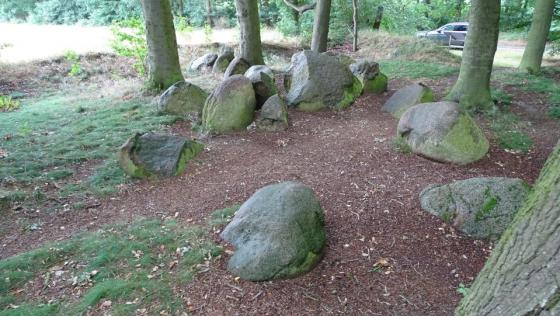taken from the “Faszination Archäologie” information board:
Neolithic tomb
Despite its fragmentary state of preservation, the approximately 5,000-year-old Stenumer megalithic tomb offers an impressive overall picture that gives a good idea of the original layout.
Testimony of sedentary life
Megalithic tombs like “Stenum” are considered the oldest surviving structures of northern Central Europe. Until the fourth millennium BC only hunters and gatherers lived in the Wildeshauser Geest. Only the “funnel beaker culture” (about 3500 – 2700 BC) settled down permanently.
They bred cattle, planted grain and lived in post constructions. Presumably, they believed in an otherworldly life and therefore built their deceased sometimes monumental graves of boulders. Those megalithic graves or megalithic tombs (Greek: mega = large, lithos = stone) were erected not for individuals, but for groups and used over many generations.









